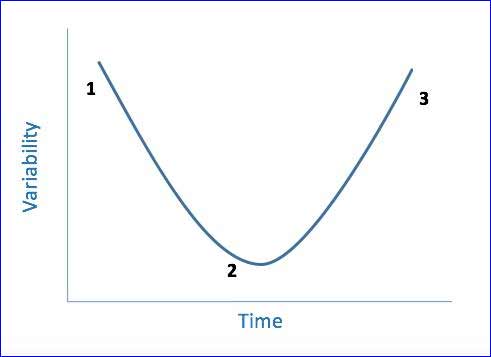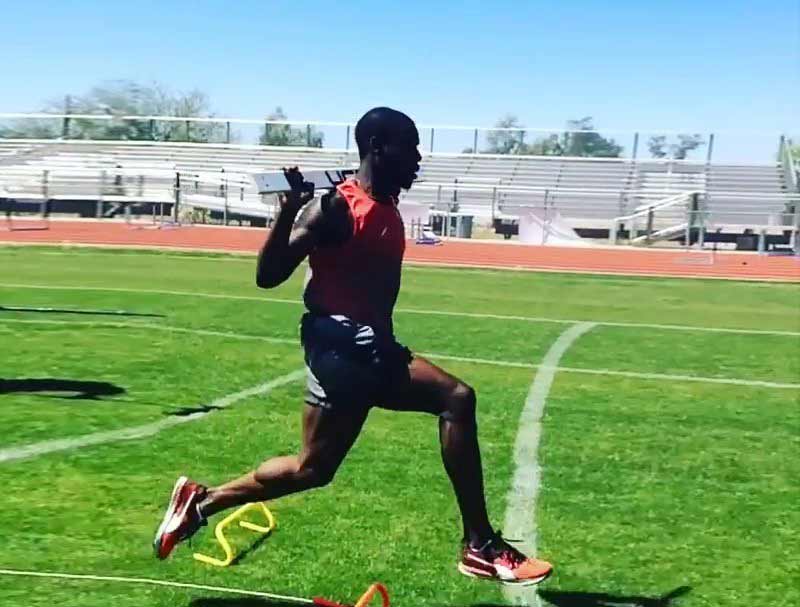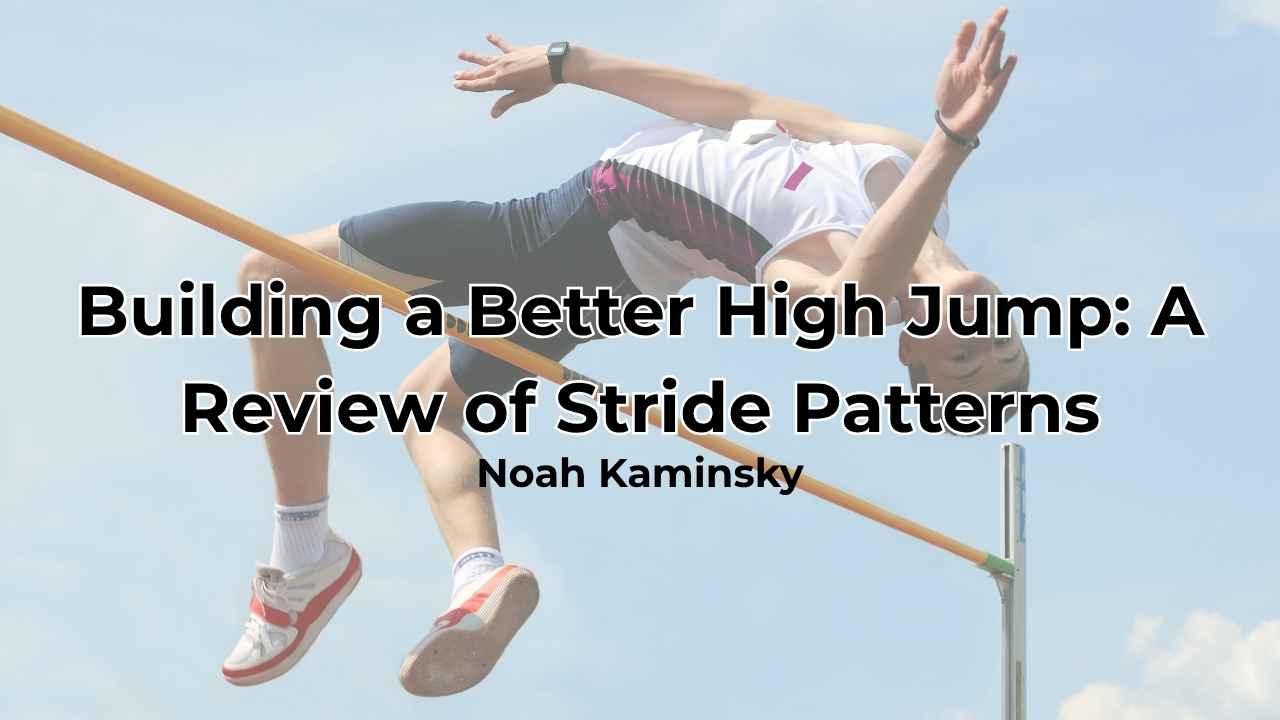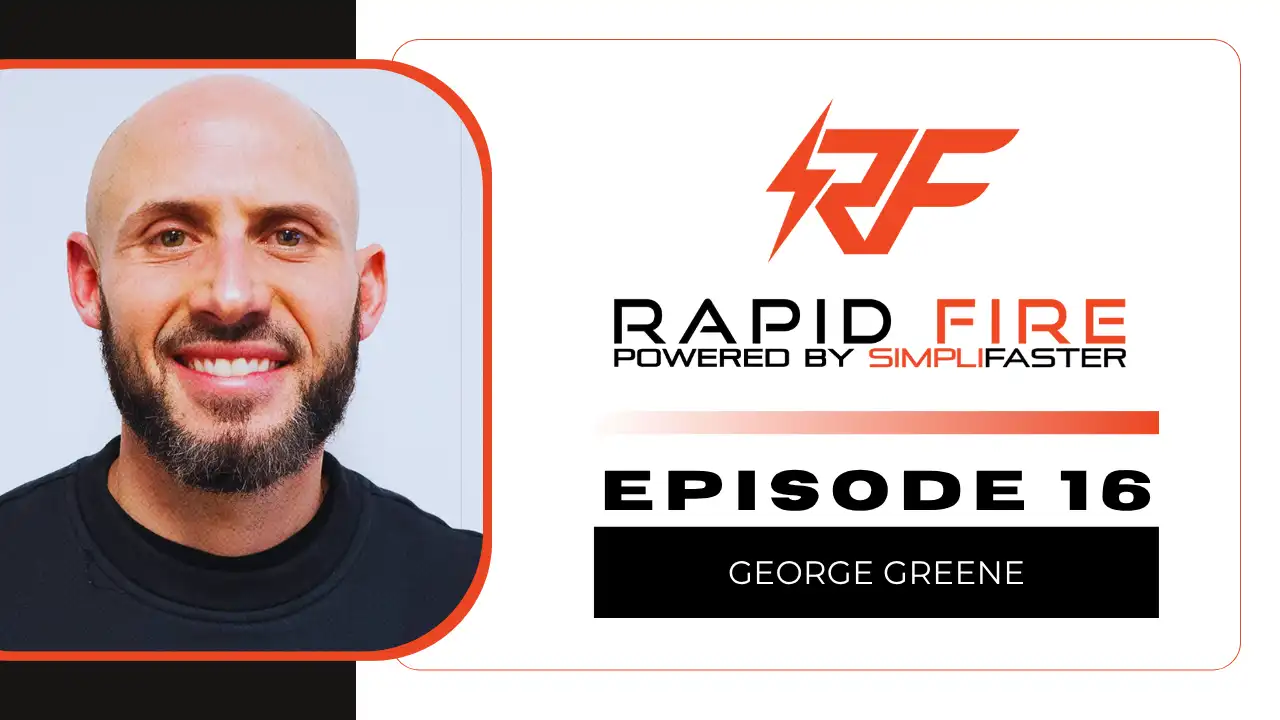[mashshare]


With regard to sprinting, it appears that team sport environments are heading towards a much more open-minded approach (as opposed to the traditionalistic views that have survived across generations). A desire for improved performance—for an edge on the opponent—has led to a need for guidance and consultation from individuals devoted to the most basic elements of human movement and performance.
This is where track and field comes in. The individual elements of track and field form the basis of nearly all other sporting endeavors.
Run fast.
Jump high.
Throw far.
The carryover is profound, and it is for this reason that professionals in track and field have historically been at the forefront of sports performance.
When you overlay this with the fact that coaches typically do not educate athletes on proper acceleration technique—and consider that a multitude of myths exist in this realm—you can accurately conclude that the door is open for substantial improvement through the development of this skill.
Principles of Acceleration – What You Must Know
A first principle of applying acceleration to the team sport setting is that athletes must first know the rules before they can break them. When starting with a sound basis of linear acceleration, it becomes much simpler for athletes to understand how to move through space in open-chain and dynamic settings.
Team sport athletes often lack any real understanding of the components involved in accelerating. They also exhibit ingrained movement solutions that have developed over time and may need altering. Therefore, education is the first stop when introducing elite acceleration to team sport athletes. Only then can you begin to target the most efficient movement solutions for each individual.
So where to begin? You can break the skillful execution of an acceleration into three key concepts: projection, rhythm, and rise.
Projection speaks to both the total body angle relative to the ground at initial push-off and the idea of projecting the center of mass through space, or covering ground from the very first step. The projection angle varies across individuals and settings. More powerful athletes will be able to project lower, as will athletes with metal spikes on a rubber surface who have no barriers in their way. Regarding projecting through space, this is in opposition to some commonly held beliefs that short, choppy steps are desirable. An athlete cutting their strides short is not the answer. They must produce force, they must cover ground, and they must obtain some level of horizontal velocity through the acceleration.
The skillful execution of #acceleration depends on three key concepts: projection, rhythm, and rise, says @jhettler24. Share on XWe can think of rhythm in terms of the sound of each ground contact. There will be a longer gap between these contacts initially and this gap will gradually close with each step as velocity increases. Rhythm is closely related to projection in that, to satisfy the appropriate rhythm of the run, an athlete will need to cover ground with their initial strides while producing force horizontally. As the athlete progresses through the run and achieves some level of horizontal velocity, force will be directed in a more vertical fashion, which accompanies more frequent ground contacts. It may help to think of this in relation to a steam engine train taking off from the station. As the train gains speed, it makes a steadily increasing “chugging” sound.
Rise refers to a steady increase in angle of the entire body. Tying this back to projection and the total body angle from initial push-off, this angle will increase gradually with each step while maintaining a straight line from head to heel. A common myth pertaining to this aspect of accelerationg is that it is beneficial to “stay low” for the entirety of the acceleration prior to obtaining a sudden upright posture. One major issue here is that the maintenance of front-side mechanics, which we know to be beneficial, becomes much more difficult when the transition to upright is abrupt and/or delayed. Again, the rate of this rise will be situationally dependent for team sport athletes, as they have much more visual input to be aware of (implements, defenders, etc.) than sprinters.

Educating the athletes on these concepts creates the foundation upon which increasing levels of context are built through both drill execution and coach feedback. It is not until the athlete has a cognitive understanding of the true nature of acceleration that they can start to think about the physical requirements of such a skillful task. Likewise, it is not until team sport athletes understand linear acceleration mechanics that they can begin to adapt and find the correct movement solution to their unique set of movement “problems.”
Programming Acceleration – Motor Control and Beyond
Context is king when teaching elite acceleration abilities to team sport athletes. As discussed earlier, the first step is educating the athletes on the three key concepts: projection, rhythm, and rise.
Once the athletes have an initial understanding of what leads to proficient—and more importantly, efficient—acceleration, it is time to begin developing the physical competencies.
Increasing variability can be a great tool in the pursuit of equipping athletes with a greater level of context around acceleration. Before going into the details of what this could look like, let’s briefly touch on variability.

First, when an individual begins learning a motor task, they have numerous degrees of freedom/variability as they work to assemble a coordination pattern of the movement. Second, as they gain and establish more control of coordinative structures, degrees of freedom/variability are restricted in the movement. Finally, as they move towards mastery of the movement, they begin to explore more degrees of freedom. The original motor pattern becomes more flexible to increase efficiency and performance, while being adaptable to varying environments through the slight altering of kinetics and kinematics.
So, how does this factor into skill acquisition for team sport athletes? My thought process is as follows: If an athlete naturally follows the aforementioned parabolic relationship of variability over time regarding motor control, as coaches we should limit the variability we reintroduce in stages 1 and 3 (as the athlete’s DoF takes care of that) and increase the variability we introduce into stage 2 in order to help bridge the gap from stage 1 to stage 3.
Let’s add detail to this through the lens of a six-week block with a concentrated focus on acceleration development.
WEEKS 1 & 2
The first two weeks are an Introductory Phase and coincide with point 1 on the graph above. The objective of this phase is to promote understanding, first cognitively and then physically, in the athletes involved. Simplicity is king and dialogue through this phase is paramount. The training elements should be rudimentary and feedback will come at a greater rate relative to the remaining four weeks.
WEEKS 3 & 4
The middle two weeks are an Exploratory Phase and coincide with point 2 on the graph above. In theory, the athletes now have more control over execution and natural variability decreases. This provides a window of opportunity for the introduction of environmental constraints and imposed variability.

The accompanying cognitive load these elements place on the athletes results in a need for decreased feedback. In a sense, the constraints will do the coaching for you. It is this phase that gives coaches an opportunity to be creative with their programming. Through identification of each individual’s key performance indicators and an accurate pairing with environmentally constrained training elements, you can expedite performance improvements.
WEEKS 5 & 6
At this point we enter the Stabilization Phase—coinciding with a more adaptable and efficient movement ability and increasing levels of natural variability, or degrees of freedom. This is where we remove the environmental constraints and return to more specific training elements. Feedback is much more targeted and we strive to attain an ability within the athlete to work through their technical execution without relying entirely on a coach.
Final Considerations and Suggestions
I mean for the categorization of phases in this outline to simply provide information relating to the progression of objectives throughout the six weeks. It is not representative of an attempt to reach stabilization of such a complex skill in the matter of a month and a half. Applying this general structure to the programming provides practitioners with a guiding light as they navigate the daily training environment and its subsequent chaos.
This framework developed organically through anecdotal means. It still holds true that many roads lead to Rome and there is more than one way to skin a cat. Just remember… Context is king. Equip the athletes with a contextual understanding of elite acceleration and build from there.
Since you’re here…
…we have a small favor to ask. More people are reading SimpliFaster than ever, and each week we bring you compelling content from coaches, sport scientists, and physiotherapists who are devoted to building better athletes. Please take a moment to share the articles on social media, engage the authors with questions and comments below, and link to articles when appropriate if you have a blog or participate on forums of related topics. — SF
[mashshare]





5 comments
Luke Cuff-Burnett
I found this article super helpful, thank you. To find something as informative as this, but not sifting through paragraphs, is great. Luke.
Dave
Superlative article and damn enjoyment reading. Stated differently an unexpected edification that was mutually beneficial to both coaches and athletes. However I’m sadly not either of above. Rather an old former rodeo man and light infantry soldier still pushing both myself and the perpetual false narratives of the elitist scribes,medical professionals faux pas de facto educators and the general public. The adage” old enough to know better but still too young to give a damn ‘ Hell yes if it’s alright with ya’ll I’ll be back hook em
Reece Williams
Could you Please subscribe me to your blog and further post. This would be much appreciated
Christopher Glaeser
Reece,
I recommend using a news reader to follow this and other blogs. Feedly has both free and premium versions and works well.
Best,
Christopher
Kwinda ONDWELA
Good notes